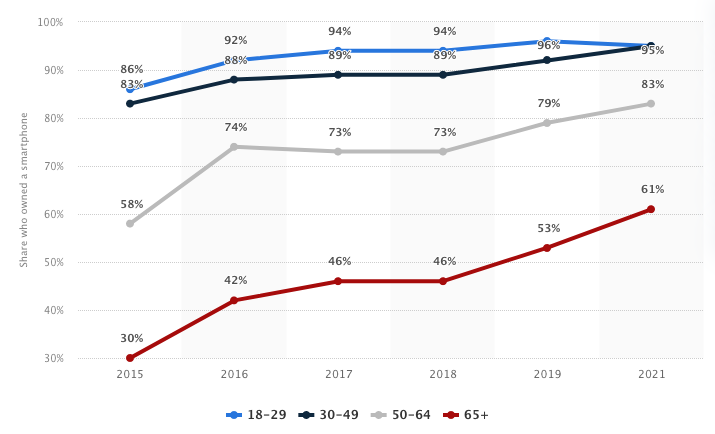
Video communication has become popular, especially among younger generations. Social media platforms have shifted from text-based content to videos and images, reducing the use of text-heavy formats.
In the past, platforms like blogs and Facebook posts were widespread. Now, TikTok, Instagram, X, and YouTube dominate, with less focus on text and more on visuals. This shift raises the question: how is this impacting customer service in call centers? Are customer needs changing? Let’s explore the trend of video communication and its impact on customer service.
For over 18 years, Communication Business Avenue (CBA) has helped some of the world’s largest companies integrate call center systems and digital communication tools. Here’s our take on this rising trend and what it means for you.
What is Video Communication?
Video communication uses both voice and images to connect people, usually through the internet or phone. Unlike regular phone calls or text chats, video allows both visual and verbal interaction, making communication clearer and more personal.
From Voice to Video Communication: The Covid Shift
Over time, communication methods have evolved from face-to-face conversations to phones, emails, and text messaging. The Covid-19 pandemic, which began in 2020, sped up this evolution. With face-to-face communication restricted, people turned to remote work and video communication.
The use of landlines is decreasing, while smartphone ownership is rising fast, with 88.6% of people now owning one. This shift has made non-face-to-face communication, like video, even more relevant. Video communication became a go-to tool for both work and personal interactions, leading to major changes in how businesses operate.
Smartphone ownership in the U.S. 2015-2021, by age group

Smartphone ownership in the United States is most common in the younger age groups but we can see ownership and usage is increasing even for older ones. Stats by: Statista
The Rise of Video Communication
The way companies handle customer service has changed due to the increase in video communication. Call centers now have to provide support through more than just the phone—they need to integrate new communication tools, like video.
During the pandemic, video conferencing systems like Zoom and Teams became essential, both in and out of work. Video calls, once used mainly between individuals or within companies, are now a standard tool for customer service. In fact, 2022 was called the ‘year of video communication.’ This trend continues even in 2024 and beyond.
Major business process outsourcing (BPO) companies are reporting increased demand for video communication services in customer support, with many projects requiring video communication as a core feature. In the February issue of Call Center Japan, the situation of each BPO company was explained as “expanding needs for video communication”. Note the comments from a few prominent BPO firms:
- Transcosmos: “Because face-to-face customer service is not possible, there is a need for customer service through video communication.”
- TMJ: “The number of new projects is increasing, and some of them are requested to serve customers using video communication, so we can expect future expansion.”
Moving Away from Voice-Only Channels
Customers are gradually moving away from traditional voice channels like phone calls for several reasons:
- Repeating the same explanation multiple times is frustrating.
- Without visuals, it’s hard to explain technical issues or product problems.
- It’s difficult to demonstrate issues verbally without showing them.
For older customers, using only voice can be stressful. Video communication offers a solution, making it easier for both customers and agents to connect face-to-face. It can really make it easier to show true empathy to your older customers.
The Natural Shift Toward Video Communication
Since 2020, tools like Zoom and Teams have become a normal part of life. This shift has also affected customer service. Video support, which allows agents to see a customer’s issue in real-time, is becoming the new standard.
For example, technical support teams can now use smart devices to show what they’re seeing, making it easier to troubleshoot issues remotely. Browser-based video tools are also gaining popularity, allowing customers and agents to view the same screen and resolve problems together.
By adding video communication, call centers can solve a wider range of customer issues without needing to send an engineer. This boosts efficiency and helps resolve problems faster.
Video communication tools that can be deployed with the SDK in Avaya and Cisco call center systems are attracting attention as it is a video communication tool that most customers can use without difficulty. For example, CBA Live Assist integrates well with Cisco.
Benefits of Video Communication
- Improved communication efficiency: Video allows customers and agents to see each other, making explanations much easier and faster than voice alone. It’s also easier to convey emotions through video.
- No travel time: Video communication offers the same face-to-face interaction as in-person meetings without the need for travel. This saves time and resources.
- Location flexibility: Video calls can happen from anywhere with internet access, making it easier to offer support and resolve issues remotely.
Increased Efficiency of Communication
We are all familiar with the famous adage ‘a picture paints a thousand words’, and the same principle is true of video communication. The fact that both the customer and the agent can maintain a visual connection through video communication means that things like explaining device operation methods or form input methods are much easier and less time-consuming, than they would be if voice channels were the only option.
Additionally, emotional information that cannot be transmitted by voice alone can be conveyed immediately by video, and because video makes it easier to understand the situation of the other party, you can more readily understand the needs of the customer.
Transform into a Visual Contact Center
Introducing video communication to call centers allows agents to interact with customers in real-time, similar to face-to-face service in a physical store. This transforms traditional call centers into visual contact centers, offering a new and improved customer experience.
However, it’s important to consider the specific needs of each customer. For example, industries like finance or telemedicine may require secure video tools. In e-commerce, tools that don’t need pre-installed apps, like web-based video chats, are ideal.
At CBA, we have 18 years of experience in customer service innovation. As a skilled system integrator, we would be happy to assist you in finding the right technology and tool for your use. Contact us today for a consultation.
Conclusion
In customer service, the saying “a picture paints a thousand words” holds true. Video communication offers efficiency and effectiveness that traditional methods can’t match. Now is the time to transform call centers into next-generation visual contact centers, enabling faster, clearer, and more personal interactions between companies and customers.


